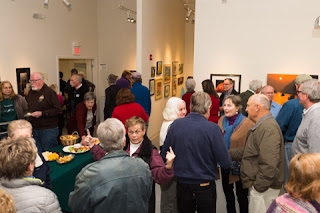Ken Grant has worked in Delaware media, politics and marketing for 25 years. He and his Lovely Bride enjoy Wilmington's arts and culture scene as much as they can.
 |
| Hip-hop artist Richard Raw performs. |
Dr. Lynnette Young Overby (Director of the Office of Undergraduate Research and Experiential Learning at the University of Delaware) and Colin Miller have created a multi-genre event that communicates hundreds of years of powerful, emotional history through dance, music, images, video, documentary footage and media interviews. The University of Delaware Professor of Theatre and Dance (Overby) and the CAS Director of Global Arts (Miller) gathered dancers from the U.S. and South Africa to explore the tumultuous racial strife of each country.
The project, Same Story Different Countries – From oppression to
resilience to liberation in South Africa and the United States – takes the
audience on a journey from the African Savannah to slave plantations in the
U.S. to civil rights struggles in both the U.S. and South Africa. The primary
form of communication in the show is dance. Dozens of dancers transform the
stage, expressing the joy of community, the pain of oppression, the strength of
character, the outrage at injustice, and the determination of a spirit that
continues regardless of ignorance and violence.
While the dancers were performing to music provided
by a soundtrack or beautiful live voices, there was one segment performed to
the sound of testimonies before the Greensboro Truth and Reconciliation
Commission and an interview by Wolf Blitzer with civil rights activist Deray McKesson.
Well-known Wilmington hip-hop artist Richard Raw performed his latest hit, Shine Yo Light, in the
part of the program titled “The Power of Walking Together,” encouraging the
African American community to take pride in their history and heritage while
shining a light for others to follow.
The choreography and performances left the audience amazed
at both the technical expertise and emotional connection achieved by the
performers.
Unfortunately, this production has only been scheduled for one performance in this region, with talks now of taking the program to
South Africa. If the organizers stage another production in the U.S., you will absolutely want to experience this powerful piece of performance art for yourself.
See www.ccacde.org.
See www.ccacde.org.















